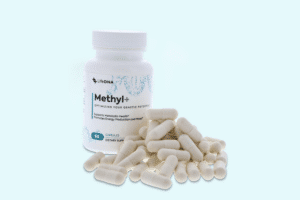
Exercise heart rate recovery (EHRR) measures how promptly the heart rate returns to its resting state after a period of intense exercise. This calculation involves determining the difference between the peak heart rate during exercise and the heart rate recorded after the cessation of exercise.
The process of heart rate recovery unfolds in two phases:
Exercise heart rate recovery serves as an important indicator of cardiovascular wellness and fitness. A quicker EHRR is generally associated with enhanced cardiovascular fitness, while a slower EHRR may suggest a poor fitness level or even an elevated risk of cardiovascular disease.
It’s crucial to note that specific benchmarks for a “good” heart rate recovery can vary based on individual factors such as age, overall wellness, and physical fitness level. Recognizing these individual differences allows for a more nuanced interpretation of EHRR in assessing cardiovascular well-being.

Exercise heart rate recovery extends beyond being a mere measure of one’s heart efficiency; it stands as a pivotal indicator of overall cardiovascular wellness.
Overall, monitoring and enhancing exercise heart rate recovery through regular exercise is important in maintaining cardiovascular wellness and mitigating the risk of heart conditions.
The human heart is a marvel of nature, capable of adjusting its rate to match the demands of the body. This adaptability is particularly evident during and after exercise when the heart rate increases to meet the body’s heightened need for oxygen and then decreases during recovery. This process is affected by our genetics. Below are some of the genes that can be affected by genetic variation and may influence exercise heart rate recovery.
The GJA1 gene, situated near the 6q22 locus, guides the production of connexin 43, a protein that forms channels (gap junctions) between cells. These channels facilitate the movement of nutrients, ions, and signaling molecules crucial for cell communication, particularly in the heart’s response to exercise and heart rate recovery.
Found near the 14q12 locus, the MYH7 gene provides instructions for producing the beta (β)-myosin heavy chain protein. This protein, present in cardiac and skeletal muscle cells, is a component of type II myosin, which generates the mechanical force essential for muscle contraction. This contraction force plays a vital role in the heart’s response to exercise, including heart rate recovery.
CHRM2 produces the muscarinic acetylcholine receptor M2, a dominant form of cholinergic receptors in the heart. This receptor plays a crucial role in regulating heart function by inducing negative chronotropic and inotropic effects upon binding with acetylcholine. The interaction between CHRM2 and acetylcholine is mediated by the postganglionic parasympathetic nerves, contributing to the intricacies of cardiovascular modulation.
Studies reveal a specific association between CHRM2 and exercise heart rate recovery. The functionality of this gene aligns with observed outcomes, reinforcing the idea that CHRM2 is intricately involved in this physiological process.
These genes are thought to play a role in shaping how the heart responds to exercise, impacting factors such as heart rate recovery. Nonetheless, the intricate mechanisms by which these genes affect heart rate recovery are not fully understood and merit continued research.
Several factors influence exercise heart rate recovery. Understanding these factors not only guides the evaluation of recovery rates but also opens avenues for personalized approaches to cardiovascular well-being.
One pivotal aspect is hydration status, with proper water intake being crucial for optimal cardiovascular health. Dehydration has been linked to alterations in heart function and an increased heart rate during and after exercise. Additionally, dehydration impedes the heart’s ability to efficiently return to its baseline rhythm post-exercise.
Caffeine consumption is another influential factor, as this stimulant affects the central nervous system and can alter heart function. A study indicated that caffeine intake may negatively impact heart rate and blood pressure recovery after physical exertion. Therefore, moderating caffeine intake is essential for supporting optimal recovery.
Fatigue and sleep quality play a vital role in overall health, affecting various bodily functions, including cardiovascular performance. Research suggests that fatigue and inadequate sleep can impact both peak heart rate during exercise and the subsequent recovery period. Individuals experiencing fatigue may find that their hearts take longer to return to a resting state after exercise.
Intrinsic factors such as age and sex also contribute to variations in exercise heart rate recovery. Generally, younger individuals and males exhibit faster heart rate recovery. The reasons for these differences are complex, involving interactions between physiological and hormonal factors.
Furthermore, hypertension, or high blood pressure, is a common cardiovascular condition that can influence heart rate recovery. High blood pressure can alter the structure and function of the heart, potentially resulting in a slower recovery process. Lifestyle modifications, including dietary changes and regular physical activity, are crucial for managing hypertension and improving heart rate recovery.
Understanding both the genetic and non-genetic factors provides individuals with valuable insights into their cardiovascular health. Adopting a holistic approach that includes proper hydration, mindful caffeine consumption, adequate rest, and consideration of individual characteristics can promote a more efficient exercise heart rate recovery and support long-term cardiovascular well-being.
Improving exercise heart rate recovery involves strategic practices that promote the efficient return of the heart to its resting state after physical exertion. Here are some tips to enhance heart rate recovery:
Ensure a comprehensive warm-up before each workout. Include 5-10 minutes of steady-state cardio, gradually elevating your heart rate to approximately 60% of your maximum heart rate. Incorporate dynamic stretching exercises targeting individual muscle groups to prepare them for the upcoming activity.
For those engaging in HIIT workouts, which have a high aerobic capacity demand, consider the following recovery strategies:
Stay well-hydrated during your training sessions by drinking an electrolyte-enhanced intra-workout drink. This helps replace electrolytes lost through sweating and supports overall hydration, contributing to improved heart rate recovery.
Incorporating these tips into your fitness routine can contribute to a more effective exercise heart rate recovery, promoting cardiovascular health and overall well-being.
Discover the secret to reaching your fitness goals with the LifeDNA Fitness Report. This report breaks down your unique genetic code to give you insights on your exercise heart rate recovery and offers tailored suggestions to boost your cardiovascular health. It’s like having a personalized fitness guide that helps you understand how your genes influence your body’s response to exercise.
Dive into the details of your muscle composition, metabolism, and more, so you can craft a workout plan that’s perfectly in sync with your genes. Get the report today!
*Understanding your genetics can offer valuable insights into your well-being, but it is not deterministic. Your traits can be influenced by the complex interplay involving nature, lifestyle, family history, and others.
Our reports have not been evaluated by the Food and Drug Administration. The contents on our website and our reports are for informational purposes only, and are not intended to diagnose any medical condition, replace the advice of a healthcare professional, or provide any medical advice, diagnosis, or treatment. Consult with a healthcare professional before making any major lifestyle changes or if you have any other concerns about your results. The testimonials featured may have used more than one LifeDNA or LifeDNA vendors’ product or reports.


